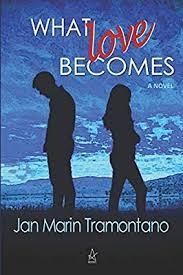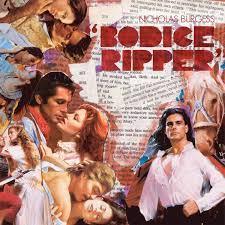 Love triumphs. They marry and live happily ever after. The End.
Love triumphs. They marry and live happily ever after. The End.
But not always. In Jan Marin Tramontano’s new novel, What Love Becomes, we meet two fortyish couples two decades later, and it’s not happily ever after. None of these people got what they’d envisioned. Both wives are tortured by regret.
One connects with the other’s husband, they fall in love, and plan for a new life together. But on the very night it was to start, a terrible car crash intervenes.
That’s just the prologue. I was expecting the narrative to proceed from there. But the author instead, interestingly, now goes to backstory, more fully and intimately chronicling the two marriages, and what went wrong. That’s the meat of the book. Only near the end does the tale pick up again from the crash.
Obviously, this is the antithesis of a standard romance novel. No bodice-ripper.

People are complicated, and when the complications of one are multiplied by those of another, it’s meta-complexity. That was true in my own history, with which this novel had considerable resonance. Its bust-up was sudden in comparison to mine — a messy, protracted process, consuming years. But a lot of the feelings depicted in the book are ones I’ve felt. And ones my ex felt.
In the novel, Blake has his bags packed, planning to lower the boom on his unsuspecting wife and decamp to rendezvous with the other.

The novel has a contrapunto, a third couple, not married but finally heading there (slowly). And the two spurned spouses, though marooned, are finally making progress against their respective demons. So a happy ending of sorts, after all.
Tramontano’s final passage is lovely. She’d opened with parasailing as a metaphor for marriage, saying the day may come “when we cut our own towline.”

It may not. But “believe” is key. One has to believe that, despite all the buffeting winds, one isn’t powerless to set a path. That’s what the book’s characters do. It’s no fairy tale, but in the end their lives are in their own hands.

